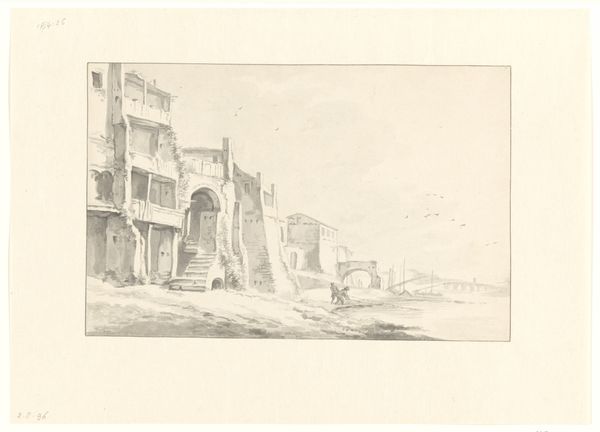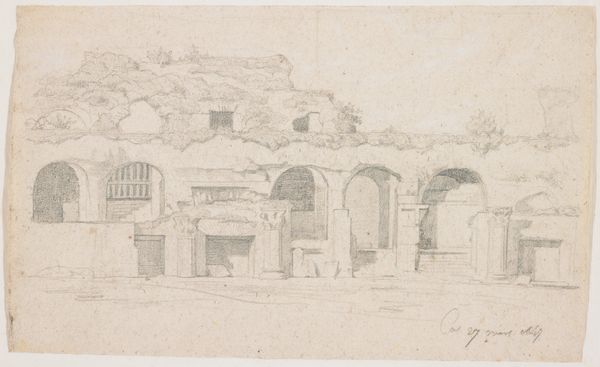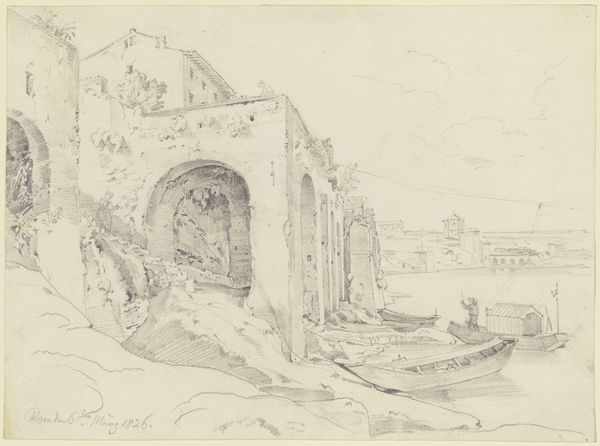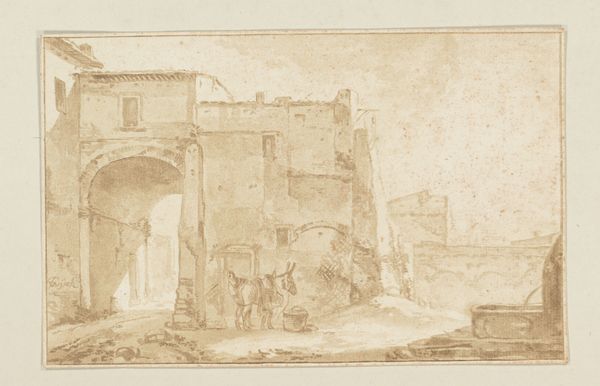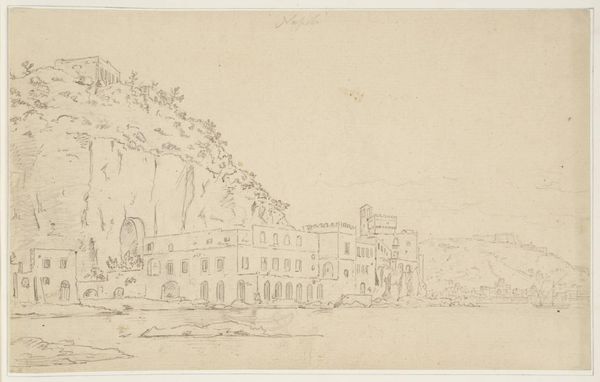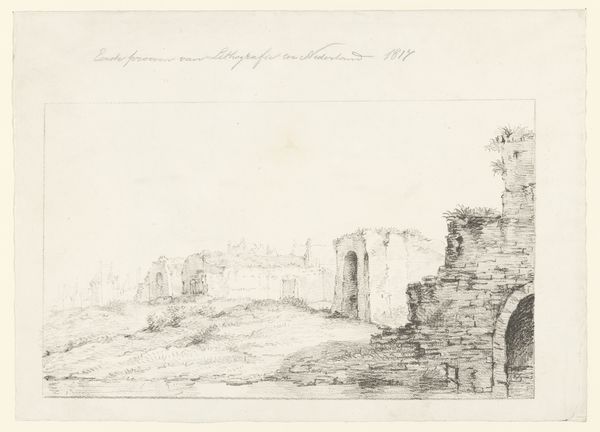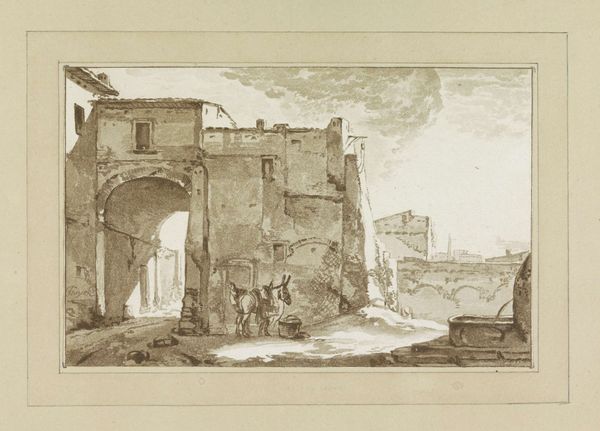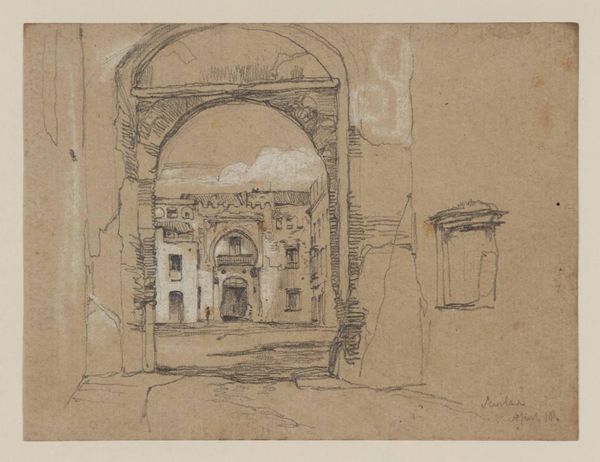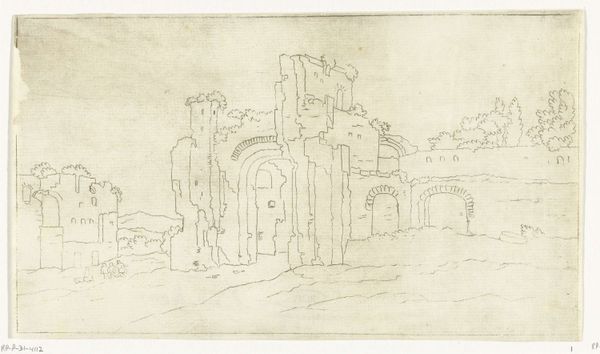
drawing, pencil, architecture
#
drawing
#
pen sketch
#
landscape
#
romanticism
#
pencil
#
architecture
Copyright: Public Domain
Curator: Carl Morgenstern's "Straßenzug in Marina Grande auf Capri," likely from 1835, greets us. It’s housed here at the Städel Museum. A lovely pencil and pen sketch. Editor: It’s immediately striking for its airiness. The delicate lines give it a very dreamlike, almost faded quality. The architecture is beautiful but seems very… unpopulated, and the mountain fades into the background. Curator: Yes, that ethereal quality is key. Morgenstern, working within the Romantic tradition, presents us not just with a place, but with a feeling. Think about the political climate of the 1830s. Travel was increasingly accessible, fostering this interest in the ‘picturesque’ and ‘untouched’ locales like Capri. But, even then, places change due to industrial demands of the new urban subject in need of escape to less urban locations to rejuvenate. Editor: Absolutely. I am drawn to the meticulous detail despite its looseness. Look at how the pencil creates depth in the arches, how the sun beats on stone. It feels incredibly tactile and embodied labor. Curator: Good point. But consider how the composition reinforces ideas about Italy's place in the European imagination. The idealized view of Capri removed of the working class, is carefully curated, reflecting a Northern European, especially a German, audience’s desires. This idyllic Mediterranean location represents freedom and escape for his patrons that has long existed only to fade in time Editor: That makes me wonder about the actual process of drawing and etching at the time; what pencils did Morgenstern use to produce those thin consistent lines to appeal the wealthy middle class? Where they made locally, or bought to be delivered, possibly Italian produced tools? Even art production leaves marks! Curator: It is truly remarkable how he conveys that atmosphere of faded grandeur and a vision to capitalize tourism. The drawing functions almost as a souvenir even before mass tourism truly takes hold and displaces it own culture. Editor: Precisely. Looking closely at his artistic practice shows so much to see—more than first meets the eye. Curator: A fascinating dialogue between place, artistic skill, and broader cultural forces then that gives a look on art industry today as well. Editor: Absolutely, making it such a relevant, and beautiful, piece even now.
Comments
No comments
Be the first to comment and join the conversation on the ultimate creative platform.
